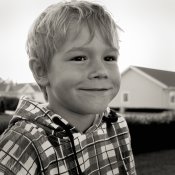Way back in school, learning to use a 4x5 camera for portraiture (besides being a classic style and the cameras having movements, you could retouch the negatives) we were encouraged not to stop down below f/11. Not only were the studio flash units we used not all that powerful, but by limiting the DOF a little for head/shoulder closeups, you produced a more pleasing effect. Also, the effect of the home-made diffusers we fashioned (black tulle in a cardboard frame) would show, but the net pattern would not. Stopping down to f/16 began to show the pattern. Old-fashioned portrait lenses often were used wide open for limited DOF effects as well as speed on very slow old films. Much depends on the situation, style of portrait, subject-to-camera distance, lighting.
In the landscape, I often am in a position where I want everything to be in focus. I'm not afraid to stop a MF lens down to f/22 or a LF lens down to f/32. I've even used f/64 and higher on 8x10. Depends on the situation. Since I rarely make big enlargements, I notice no appreciable quality loss due to small apertures.
Peter Gomena




